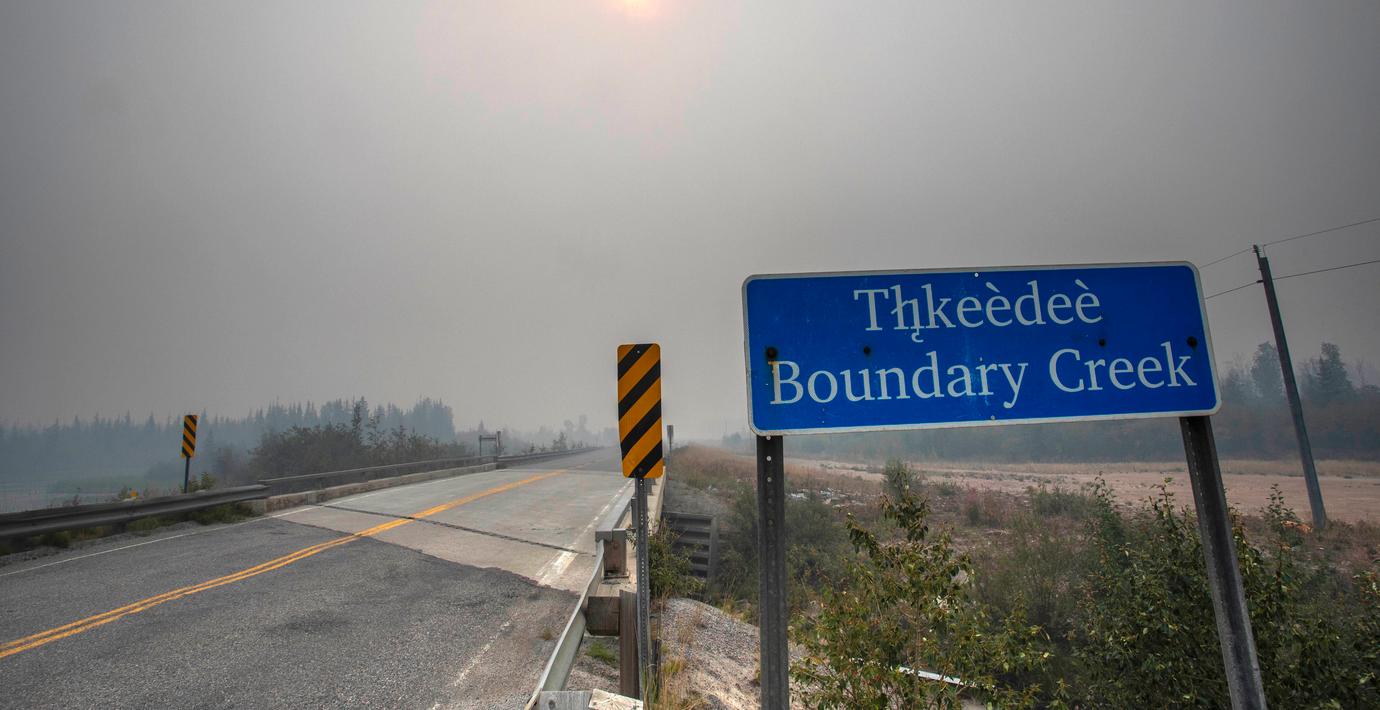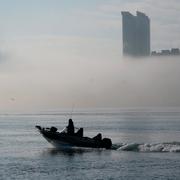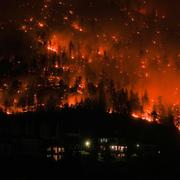
Lisas familj flydde lågorna: ”Bilen började smälta”
20 000 invånare i Kanadas nordliga stad Yellowknife måste lämna området senast fredag kväll, rapporterar CBC. Det efter att staden omringats av totalt fyra skogsbränder.
På söndagen flydde Lisa Mundy det brandhärjade området tillsammans med sin familj. Hon beskriver hur sikten skymdes och hettan började tränga sig in i bilen de färdades i.
– Framrutan sprack och bilen började smälta och fyllas på med rök. Min son ropade att han inte ville dö, säger Mundy till den kanadensiska nyhetskanalen.
Kanada har i år drabbats av de värsta skogsbränderna i landets historia. Evakueringsinsatsen i Yellowknife fortsätter, och minst ett sjukhus har flyttat patienter till andra städer för att förbereda sig på att ta emot skadade.
bakgrund
Yellowknife
Wikipedia (en)
Yellowknife (; Dogrib: Sǫǫ̀mbak’è) is the capital, largest community, and only city in the Northwest Territories, Canada. It is on the northern shore of Great Slave Lake, about 400 km (250 mi) south of the Arctic Circle, on the west side of Yellowknife Bay near the outlet of the Yellowknife River.
Yellowknife and its surrounding water bodies were named after a local Dene tribe, who were known as the "Copper Indians" or "Yellowknife Indians", today incorporated as the Yellowknives Dene First Nation. They traded tools made from copper deposits near the Arctic Coast. Its population, which is ethnically mixed, was 20,340 per the 2021 Canadian Census. Of the eleven official languages of the Northwest Territories, five are spoken in significant numbers in Yellowknife: Dene Suline, Dogrib, South and North Slavey, English, and French. In the Dogrib language, the city is known as Sǫǫ̀mbak’è (Athabaskan pronunciation: [sõːᵐbakʼe], "where the money is"). Modern Yellowknives members can be found in the adjoining, primarily Indigenous communities of Ndilǫ and Dettah.
The Yellowknife settlement is considered to have been founded in 1934, after gold was found in the area, although commercial activity in the present-day waterfront area did not begin until 1936. Yellowknife quickly became the centre of economic activity in the NWT, and was named the capital of the Northwest Territories in 1967. As gold production began to wane, Yellowknife shifted from being a mining town to a centre of government services in the 1980s. However, with the discovery of diamonds north of the city in 1991, this shift began to reverse. In recent years, tourism, transportation, and communications have also emerged as significant Yellowknife industries.
Yellowknife
Omni är politiskt obundna och oberoende. Vi strävar efter att ge fler perspektiv på nyheterna. Har du frågor eller synpunkter kring vår rapportering? Kontakta redaktionen



